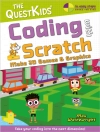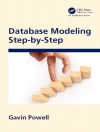Long gone are the days when program veri?cation was a task carried out merely by hand with paper and pen. For one, we are increasingly interested in proving actual program artifacts, not just abstractions thereof or core algorithms. The programs we want to verify today are thus longer, including whole classes and modules. As we consider larger programs, the number of cases to be considered in a proof increases. The creative and insightful parts of a proof can easily be lost in scores of mundane cases. Another problem with paper-and-pen proofs is that the features of the programming languages we employ in these programs are plentiful, including object-oriented organizations of data, facilities for specifying di?erent c- trol ?ow for rare situations, constructs for iterating over the elements of a collection, and the grouping together of operations into atomic transactions. These language features were designed to facilitate simpler and more natural encodings of programs, and ideally they are accompanied by simpler proof rules. But the variety and increased number of these features make it harder to remember all that needs to be proved about their uses. As a third problem, we have come to expect a higher degree of rigor from our proofs. A proof carried out or replayed by a machine somehow gets more credibility than one that requires human intellect to understand.
Bernhard Beckert & Reiner Hahnle
Verification of Object-Oriented Software. The KeY Approach [PDF ebook]
Foreword by K. Rustan M. Leino
Verification of Object-Oriented Software. The KeY Approach [PDF ebook]
Foreword by K. Rustan M. Leino
Acquista questo ebook e ricevine 1 in più GRATIS!
Lingua Inglese ● Formato PDF ● ISBN 9783540690610 ● Editore Bernhard Beckert & Reiner Hahnle ● Casa editrice Springer Berlin Heidelberg ● Pubblicato 2007 ● Scaricabile 6 volte ● Moneta EUR ● ID 2162923 ● Protezione dalla copia Adobe DRM
Richiede un lettore di ebook compatibile con DRM












